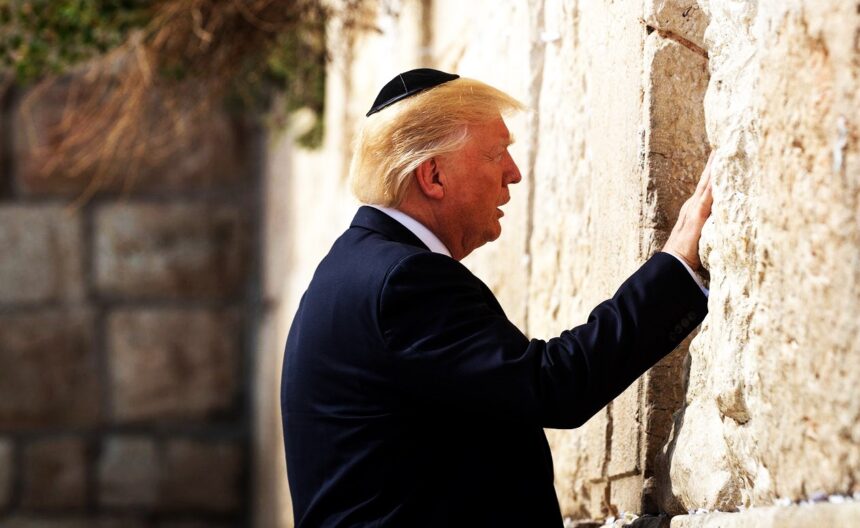We are talking about JD Vance Wailing Wall, the author of Hillbilly Elegy and now a prominent figure in American politics, has gained substantial attention in both literary and political spheres. The concept of the Wailing Wall, a religious and historical landmark in Jerusalem, has emerged in discussions related to Vance, often symbolizing much more than a physical structure. In this article, we aim to explore the intersection between J.D. Vance and the symbolism of the Wailing Wall, delving into the deeper implications and the cultural, religious, and political significance of this association.
Who is JD Vance Wailing Wall?
JD Vance Wailing Wall, born in 1984 in Middletown, Ohio, grew up in a working-class family with roots in Kentucky. His memoir, Hillbilly Elegy, published in 2016, catapulted him to fame, providing a deep and personal insight into the struggles of the white working-class in America. Vance’s narrative, often intertwined with themes of poverty, addiction, and identity, struck a chord with many readers during a period of rising populism in the U.S.
Vance’s rise from poverty to success as a venture capitalist and author captured the complexities of the American Dream, illustrating both the resilience of the human spirit and the systemic challenges that individuals in similar circumstances face. His book was eventually adapted into a film, further solidifying his status as a commentator on American social issues.
Today, Vance is an influential voice in American conservative politics, having transitioned from an author to a U.S. Senator for Ohio. His political views often reflect his upbringing, and he frequently discusses the struggles of America’s working class, rural communities, and the cultural and economic factors affecting them.
Understanding the JD Vance Wailing Wall
The Wailing Wall, also known as the Western Wall, is one of the holiest sites in Judaism. Located in the Old City of Jerusalem, it is a remnant of the Second Temple, which was destroyed in 70 CE. The wall has stood as a place of prayer and pilgrimage for Jews for centuries, symbolizing both faith and suffering.
The term “Wailing Wall” stems from the Jewish tradition of mourning the destruction of the Temple, and visitors to the site often place written prayers in the cracks of the stones. While it is primarily a Jewish religious site, people of all faiths visit the Western Wall to reflect, pray, and connect with the historical significance of the location.
Symbolism of the Wailing Wall
The Wailing Wall serves as a symbol of enduring faith, perseverance through adversity, and the longing for a better future. These themes resonate across various cultures and religions, making the wall a universal emblem of hope, resilience, and spiritual connection.
In political contexts, the Wailing Wall often represents moments of introspection, reconciliation, and a recognition of historical and contemporary struggles. For many, it is not just a physical site but a metaphor for the broader human experience of seeking peace and understanding in times of conflict.
Connecting JD Vance Wailing Wall?
The association between jd vance wailing wall is multifaceted. As a figure who embodies the struggles of the American working class and rural communities, Vance’s story parallels the symbolism of the Wailing Wall—both reflect endurance through hardship and a desire for redemption. The Wailing Wall’s themes of faith, perseverance, and resilience align with the narrative Vance presents in his personal journey and political discourse.
Struggles and Redemption: A Common Thread
Much like the prayers and hopes that are expressed at the Wailing Wall, Vance’s personal narrative in Hillbilly Elegy represents the individual and collective desire for a better life. His rise from poverty, struggles with familial instability, and eventual success mirror the deep yearning for redemption and hope that the Wailing Wall embodies.
Vance often discusses the economic and cultural dislocation of America’s rural and working-class communities, framing these struggles as analogous to the historical challenges faced by communities across the globe. Just as the Wailing Wall stands as a testimony to the resilience of the Jewish people, Vance positions himself as a voice for those who have been left behind by economic and social shifts in America.
Faith and Identity
Faith plays a significant role in both the symbolism of the Wailing Wall and in Vance’s life. Raised in a culture steeped in religious tradition, Vance has spoken about how faith helped him navigate his difficult upbringing. For many people, the Wailing Wall represents a connection to a higher power, a place where identity and faith converge. Similarly, Vance’s political and personal identity is deeply intertwined with his cultural and religious roots, emphasizing the importance of faith and tradition in overcoming life’s challenges.
Political Significance
In his political career, J.D. Vance advocates for policies that address the systemic problems facing America’s disadvantaged communities. Much like the Wailing Wall, which is a focal point for reflection on historical suffering, Vance’s policy discussions often revolve around the idea of understanding and addressing the root causes of economic and social dislocation in the U.S.
He frequently critiques the failures of modern American policy in helping rural and working-class communities, drawing a parallel to the Wailing Wall’s symbolic role as a site for reflecting on the failures of past systems and the ongoing search for peace and reconciliation. Vance’s work can be seen as an effort to rebuild the metaphorical “walls” that have crumbled in American society, advocating for a future where these communities are no longer marginalized.
J.D. Vance’s Broader Influence
Beyond his political career, JD Vance continues to influence conversations about identity, class, and the American Dream. His voice resonates with those who feel left behind by economic globalization and rapid social change. Like the pilgrims at the Wailing Wall, Vance offers a message of hope and resilience, urging people to believe in the possibility of overcoming adversity through faith, community, and self-determination.
His role in American politics, much like the enduring presence of the Wailing Wall in global religious discourse, serves as a reminder of the complex interplay between personal history, collective identity, and the forces that shape nations. Both Vance and the Wailing Wall represent the enduring struggle for meaning, belonging, and justice in a world that is often tumultuous and unpredictable.
Conclusion
The association between JD Vance Wailing Wall goes beyond surface-level symbolism. Both represent narratives of survival, resilience, and the human desire for redemption. Vance’s life story, much like the prayers left at the Wailing Wall, is a testament to the power of hope and faith in the face of hardship.
As we continue to witness Vance’s influence in American politics, it becomes clear that his story is one that mirrors the themes of the Wailing Wall—a symbol of enduring faith, a reminder of the past, and a hopeful vision for the future.



